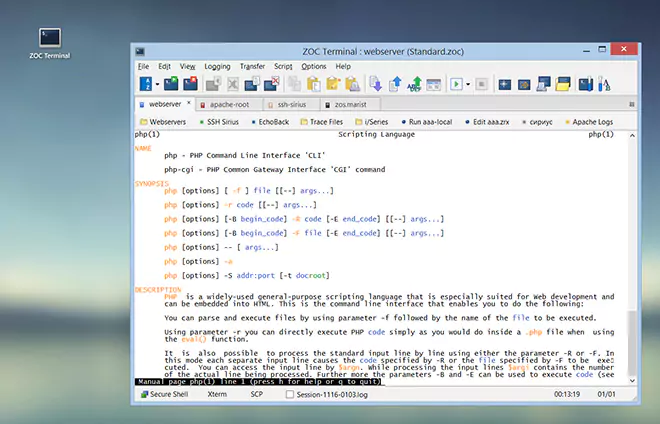Session Profiles → Auto-Highlight
The auto highlight feature allows you to highlight specific phrases (e.g. an important system prompt) on screen, using a different color for text or background or both.
You can add, edit or delete such phrases and assign or change the given colors (choosing 'Standard' for a color means that no special color will be chosen for fore- or background).
Plain Text:
The phrases will be matched to the screen output as they appear. However, they can be set to
ignore upper/lowercase and they can be set to contain a limited set of placeholders.
Placeholders:
When you enable placeholders, the trigger text can contain characters that do not represent
themselves, but which instead represent a certain class of characters: A # (number sign)
will match any digit (0-9), a @ (at sign) will match any upper or lower case letter,
a ? (question mark) will match any character and % (percent sign) will match any
character that is not a letter or digit. E.g. a trigger text of System Error (@####)
will match the text "System Error" followed by a space and an error code consisting of a letter
and four digit number in brackets.
Note: Each placeholder will match exactly one character (i.e. there is no equivalent to the * placeholder as it exists in filenames or regexp). Further, there is a restriction that the last character of a trigger text may not be a placeholder.
Regular Expressions:
The search text can also be a simple regular expression. This function is costly in terms
of CPU (please limit your use of regular expressions if you expect large bursts of output,
e.g. ls -R commands on a Linux shell).
You will need to provide a regular expression (see below), together with a boundary characters class and the maximum length of text that the regular expression is matched against.
Characters of the boundary class are expected to surround the potential result. E.g. if you select whitespace characters as the boundary class, then your regular expression will only match, if it has whitespace character on each side (a beginning or end of a line matches all these classes). For easier understanding, imagine that a single character of this class will be added to the left and right of your regular expression. E.g. a pattern of \d+ with boundary class of whitespace will match against the number 999 in a = 999 + b;, but not in a= 999+b;.
The maximum length determines the maximum length that you expect to match. Longer pieces of text, even if they occur between the correct potential boundary characters, will not be matched. E.g. a pattern of \d+ with boundary class of non-digits and maximum length of 8 will match against the number in a= 123;, but not in a= 333666999;.
Regular Expressions Elements:
The regexp search supports only the most basic regular expression types.
. Dot, matches any character
* Asterisk, match zero or more (greedy)
+ Plus, match one or more (greedy)
? Question, match zero or one (non-greedy)
[abc] Character class, match if one of {'a', 'b', 'c'}
[^abc] Inverted class, match if NOT one of {'a', 'b', 'c'}
[a-zA-Z] Character ranges, match any character of the ranges a-z or A-Z
\ exactly the character that follows next, e.g. \* will
match a *-character. Exceptions are the characters aAsSwWdD
(see below), where the combination represents whole classes of characters.
\s Whitespace and any control characters (hex 00 - 1F)
\S Non-whitespace
\w Alphanumeric/Words [a-zA-Z0-9_]
\W Non-alphanumeric
\d Digits, [0-9]
\D Non-digits
\a alphabetic characters, latin letters [a-zA-Z]
\A Non alphabetic characters
^ left anchor not supported
$ right anchor not supported
(a|b) parantheses/or-expression not supported
{m,n} bracket with counting not supported
Regular Expressions Examples:
\d+\.\d+\.\d+\.\d+ Something that roughly matches an IP address (use non-digit boundary characters).
\a\a\a\a\d\d\d\d An error code of four letters and four digits (use non-alnum boundary characters).
← Back to Session Profiles

